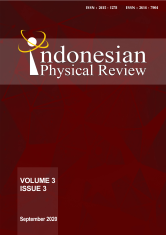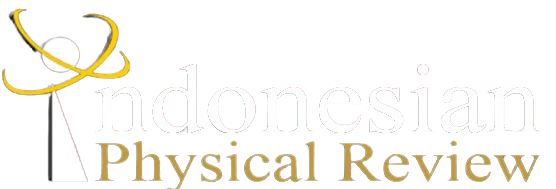Abstract
The purpose of this paper is to present a logical, consistent and understandable alternative formulation of physical laws of motion. This paper gives also a different view and understanding of physical laws of motion. This new point of view gives a deeper understanding about our universe. The central idea of this formulation is the concept of momentum and its conservation. This idea is emphasized in this paper. It is shown that Newton's laws of motion are given as a consequence of the law of conservation of momentum.Keywords:
Newton’s Laws First Year Physics Conservation of MomentumReferences
Douglas C. Giancoli (1991). Physics: Principles with Applications (3rd Ed.). London: Prentice-Hall International.
David Halliday, Robert Resnick, and Jearl Walker (2001). Fundamental of Physics (6th Ed.). New York: John Wiley and Sons.
Hans C. Ohanian (1994). Principles of Physics. New York: W.W. Norton and Co.
Raymond A. Serway and John W. Jewett Jr. (2008). Physics For Scientists and Engineers with Modern Physics (7th Ed.). Australia: Thomson Learning.
Paul P. Urone (1998). College Physics. Pacific Grove: Brooks/Cole.
Peters, P. C. (1982). Even honors students have conceptual difficulties with physics. Am. J. Phy. 50 (6),501-508.
Clement, John (1982). Students’ preconceptions in introductory mechanics. Am. J. Phys. 50 (1), 66-71.
Martin-Blas, Teresa, Luis Seidel, and Ana Serrano-Fernández (2010). Enhancing Force Concept Inventory diagnostics to identify dominant misconceptions in first-year engineering physics. Eur. J. Eng. Educ. 35 (6), 597-606.
Champagne, Audrey B., Leopold E. Klopfer, and John H. Anderson (1980). Factors influencing the learning of classical mechanics. Am. J. Phys. 48 (12), 1074-1079.
Kibble, Bob (2006). Understanding forces: what's the problem?. Phys. Educ. 41(3), 228.
Leonard Eisenbud (1958). On the Classical Laws of Motion. Am. J. Phys. 26, 144-159.
Stocklmayer, Sue, John P. Rayner, and Michael M. Gore (2012). Changing the order of Newton's laws—Why & how the third law should be first. Phys. Teach. 50 (7), 406-409.
Hans C. Ohanian and Remo Ruffini (1994). Gravitation and Spacetime (2nd Ed.). New York: W.W. Norton and Co.
Edwin F. Taylor and John Archibald Wheeler (1992). Spacetime Physics: Introduction to Special Relativity. New York: W. H. Freeman and Co.
Eugene Hecht (2011). On defining mass. Phys. Teach. 49(1), 40-44.
License
Authors who publish with Indonesian Physical Review Journal, agree to the following terms:
- Authors retain copyright and grant the journal right of first publication with the work simultaneously licensed under a Creative Commons Attribution-ShareAlike 4.0 International Licence (CC BY SA-4.0). This license allows authors to use all articles, data sets, graphics, and appendices in data mining applications, search engines, web sites, blogs, and other platforms by providing an appropriate reference. The journal allows the author(s) to hold the copyright without restrictions and will retain publishing rights without restrictions.
- Authors are able to enter into separate, additional contractual arrangements for the non-exclusive distribution of the journal's published version of the work (e.g., post it to an institutional repository or publish it in a book), with an acknowledgment of its initial publication in Indonesian Physical Review Journal.
- Authors are permitted and encouraged to post their work online (e.g., in institutional repositories or on their website) prior to and during the submission process, as it can lead to productive exchanges, as well as earlier and greater citation of published work (See The Effect of Open Access).





